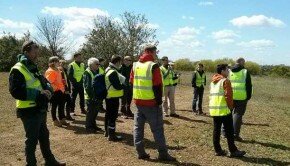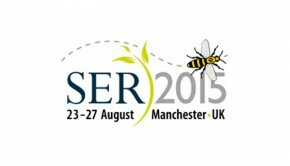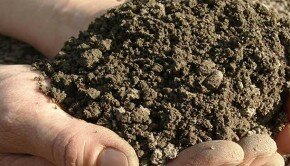Bridging the Cap: Landfills Providing Critical Pollinator Habitat
Scientists tell us that bees and other pollinators, which are all important to our food supply and ecosystem health, are dying in alarming numbers. Commercial beekeepers estimate that upward of 40% of their hives were wiped out by “colony collapse disorder” in 2013. This decline of pollinators means potential disaster for food supplies, because managed honeybees, native bees, butterflies, wasps, and flies are responsible for one of every three mouthfuls of our food (Xerxes Society). Furthermore, the fruit, nuts, and seeds produced from plant-pollinator interactions are essential as the basis of the animal food web.
Among converging factors negatively impacting pollinators are pathogens, parasites, and environmental factors including agrochemicals. A possible solution?
Creating critical pollinator habitat patches, green spaces, and pollinator parks as part of long-term management of landfill caps and their buffers. Numerous pilot studies indicate that restored, capped landfills planted in native seed mixes could restore pollinator habitats and bolster biodiversity while providing an environmentally effective final cover system.
A British study published in Restoration Ecology, January 2013, compared restored landfill sites to undisturbed reference sites, concluding that restored former landfill sites contained similar abundance of floral resources and flower-visiting insects. The researchers concluded “restored landfill sites have the potential to play a role in reversing declining populations of flower-visiting insects by partly replacing important pollinator habitats such as unimproved flower-rich grasslands.” The study noted:
- The restoration of landfill sites provides pollinators with floral resources later in the season when they may be absent elsewhere
- Restored landfill sites can be managed via sowing and mowing regimes to provide floral resources earlier in the season
- Vegetation should be managed as a mosaic, leaving some standing until spring to provide over-wintering habitat
An excellent example of pollinator-centered landfill cap design is the decommissioned Eastview landfill in Guelph, ON. This newly constructed 112-acre restored habitat is called the world’s first and largest “Pollinator Park.” (http://www.pollinationguelph.ca).
At present, most landfills are planted in their state DOT grass mix, even though the USEPA recommends using a native seed mix. Many landfill operators, engineers, and regulators have concerns that native vegetation could damage the cap and allow for additional water infiltration through the cap and waste. Such concerns are unfounded and prevent the landfill from taking advantage of the long-term ecological and financial benefits of natives.
Final caps planted with native flower-rich grasslands require installation and management expertise as the grasses and wildflowers become established. Landfill owners and their contractors often do not have experience in establishing native vegetation. An experienced eco-contractor, however, can design optimal pollinator habitat with an ideal vegetation mix for seasonal conditions and growing parameters.
There is some additional cost in using native seed, particularly when adding species preferred by pollinators. However, the cost per acre of a typical highway mix and a comparable native seed mix are similar. For example, a typical DOT mix of cool-season fescues and grasses costs roughly $200–$300 per acre, depending on seeding rates. Typical native seed mixes have historically consisted mainly of grasses with a few inexpensive forbs, and range from $150–$300/acre, depending on species and rates. A true pollinator mix with higher diversity is going to be more expensive, in the range of $300–$700 per acre, depending on the species and seeding rates.
Once reduced mowing costs are factored into the maintenance cost of the landfill cap over a 30-year life cycle, the long-term cost with a modest mix of flowering natives will be less than a typical highway mix. Of course, this cost is highly dependent on specific species used and expertise of those knowing how to make native seed work.
If the Pollinator Park concept were to be incorporated throughout North America, landfill owners could embrace the opportunity to cultivate positive environmental impacts, generate community good will, and to save money through reduced mowing.
Source:








